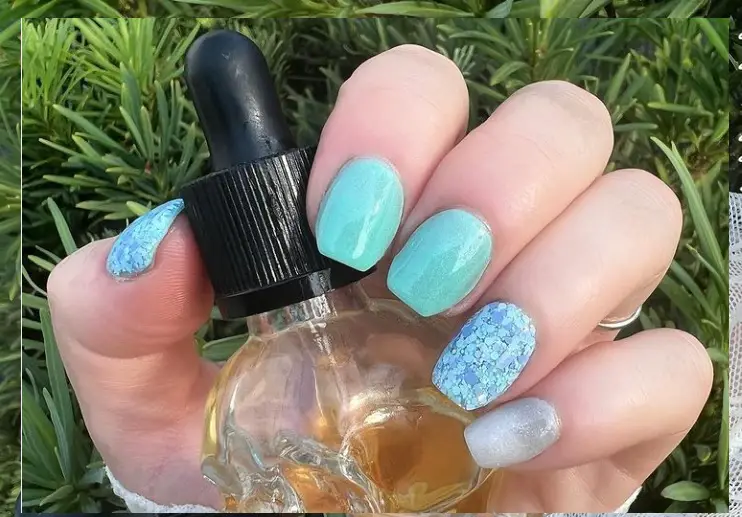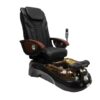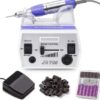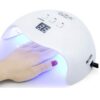If you compare an acrylic overlay to a full set of acrylic extensions, an overlay is surely less damaging. Damage happens when you have a poor application of acrylic overlay and removal as well. But if you weigh both the pros and cons of having an acrylic overlay, you will find that it is actually worth it. More below.

Content:
- Does acrylic overlay damage nails?
- How to keep your natural nails healthy after an overlay?
- Is acrylic overlay good for your nails?
- Is Acrylic Overlay Healthy?
- Does acrylic overlay strengthen nails?
- Pros of Acrylic Overlay
- Why should you avoid having acrylic overlay?
- Final Verdict
Does acrylic overlay damage nails?
Many people worry that acrylic overlays can damage their nails, but this is generally not the case. Acrylics are a type of artificial nail that can be applied over natural nails to protect them and add strength and durability. They are also used to create artificial nails for those who have damaged, weak, or bitten nails.
Acrylic overlays are made from a type of plastic called acrylate. This material is strong and durable, yet flexible, making it ideal for use on nails. Acrylics can last for several weeks with proper care.
While acrylic overlays are generally safe for your nails, there are some risks involved. If the acrylics are not applied properly, they can cause your natural nails to become weak and brittle. It is also important to make sure that the acrylate does not come into contact with your skin, as this can cause irritation.
Here are some crucial tips before you do acrylic overlay.
- Avoid: Stay away from any DIY nail kits. Otherwise, you may end up damaging the nail bed permanently.
- Allow: Always let your nails breathe between nail treatments, so they don’t get damaged.
- Keep in mind: Acrylic overlay adds length via chemicals. So it is not a natural nail treatment, hence some cautions need to be maintained.
How to Keep Your Natural Nails Healthy After an Overlay?
If you are considering getting acrylic overlays, it is important to talk to your nail technician about the best way to care for your nails afterward. Proper care after having acrylics applied will help ensure that your natural nails stay healthy and strong.
Here are some tips on how to care for your nails after having acrylic overlays applied:
✔️Avoid using harsh chemicals or detergents on your nails. These can weaken the bond between the acrylic and your natural nail, causing the overlay to come off prematurely.
✔️Do not bite or pick at your nails. This can damage the acrylic and cause it to come off.
✔️Keep your nails clean and dry. Dirt and moisture can weaken the bond between the acrylic and your natural nail, causing the overlay to come off prematurely.
✔️Be gentle with your nails. Avoid activities that may put undue stress on your nails, such as typing on a keyboard for long periods of time or opening cans with your hands.
✔️Protect your nails from damage. Wear gloves when doing household chores or working with harsh chemicals.
✔️Avoid using acetone nail polish removers. Acetone can weaken the bond between the acrylic and your natural nail, causing the overlay to come off prematurely. If you must use an acetone nail polish remover, be sure to use a non-acetone remover first to help dissolve the acrylic.
✔️Do not file your nails too aggressively. This can damage the acrylic and cause it to come off.
By following these tips, you can help ensure that your acrylic overlays last for several weeks. Proper care after having acrylics applied will also help keep your natural nails healthy and strong.
Is acrylic overlay good for your nails?
Yes, acrylic overlays are usually good. But some concerns are there. The weakening of natural nails due to sanding or polishing is one of the most typical drawbacks of acrylic overlays. After removing an acrylic overlay, your nails may become dry and brittle. These are known drawbacks of acrylic overlays; however, they are only transitory. Natural nails will grow to normal in two months if you remove your acrylic overlays properly. If you don’t know how to remove them please visit a professional nail salon as the expertise of a nail tech will be a huge help in terms of the safety of your nails.
Is Acrylic Overlay Healthy?
There is much debate surrounding the benefits of acrylic overlays for nails. Some believe that overlays can help to strengthen and protect nails, while others argue that they can cause long-term damage. So, what is the truth? Let’s take a closer look. Acrylic overlays are made from a mixture of liquid monomer and powder polymer.
The monomer acts as a glue, bonding the polymer to the nail surface. Once the mixture sets, it forms a hard, protective coating. This coating can help to strengthen weak or brittle nails and prevent further damage. In addition, overlays can provide a smooth surface for polish and extend the life of your manicure. However, it is important to note that overlays must be applied and removed correctly to avoid damaging the nail bed. When done properly, acrylic overlays can be a safe and effective way to strengthen and protect nails.
Does acrylic overlay strengthen nails?
The short answer is yes, the acrylic overlay does strengthen nails. However, there are a few things to keep in mind when considering this treatment. First of all, the acrylic overlay is not a permanent solution.
The artificial nails will need to be reapplied every few weeks as your natural nails grow out. In addition, while acrylic overlay can help to make weak and brittle nails stronger, it is not recommended for those who already have healthy nails.
The harsh chemicals used in the acrylic mixture can cause damage to the nails if used too often. Finally, it is important to choose a reputable salon when getting an acrylic overlay, as an improper application can lead to infection or other serious problems. With these considerations in mind, an acrylic overlay can be an effective way to temporarily strengthen weak and brittle nails.
Pros of Acrylic Overlay
Here are some reasons to think about obtaining an acrylic overlay:
Offers Protection
It protects natural nails against enamels and other substances that might harm them. However, you should be cautious when removing them to avoid damaging the same things you’re attempting to preserve.
Nails Are Tough And Long-Lasting
You don’t have to change them regularly; all you have to do is maintain them every 15-20 days, depending on how quickly they develop. Experts feel that accomplishing this is not difficult.
Various Forms Are Available
You don’t have to worry about forms because you can give them any shape or length, and you can even decorate the overlays to make them into an artistic masterpiece.
Obtainable At A Low Cost
Acrylic overlays are not as pricey as the luxury they provide, which may surprise you. They’re something you can purchase for a reasonable price from a decent beauty store.
They’re Simple To Get Rid Of
Another advantage is that you may quickly remove them without the assistance of a professional anytime you are no longer interested in wearing them.
Why should you avoid having acrylic overlay?
Few reasons for not having acrylic overlay –
- Not For Pregnant Women
Because the installation of acrylic overlays includes chemicals and fumes, pregnant women should avoid them at all costs.
- Exposure To Dermatitis
Allowing acrylic overlays to touch the skin may result in allergic reactions and dermatitis. As a result, you must treat them with care.
- Infection Of The Nails
If you don’t want this to happen to you, stay away from filthy salons. You’d be in danger of fungal infections as a result of them.
- It Has The Potential To Harm Your Natural Nail
Acrylic overlays can cause harm to your natural nails if they are applied and removed incorrectly. As a result, you should always hire a skilled specialist and never consider acrylic overlay a do-it-yourself project.
Final Verdict:
Acrylic Overlay may assist in completing your style, demonstrating your sophistication, improving your beauty, and conveying your wit. Fortunately, they are inexpensive, simple to use, and last longer than artificial ones. However, it might harm your natural ones and create difficulties if you utilize this overlay incorrectly. You must always seek the assistance of a skilled manicurist or follow the instructions as given in your at-home acrylic kit.








